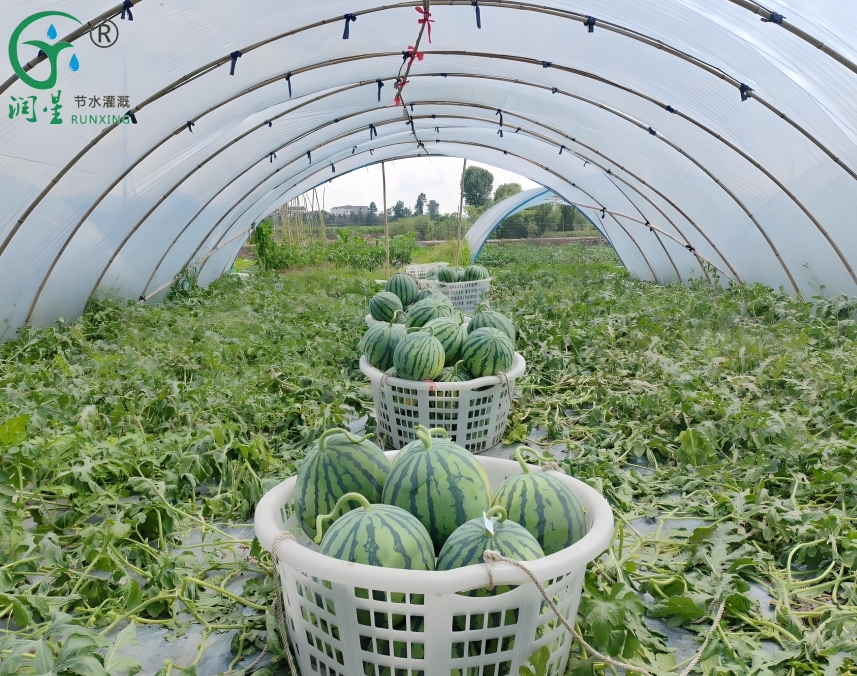Watermelon cultivation in the Americas
Watermelon Farming in the Americas, particularly in certain regions, is one of the most popular farming ventures. For these reasons, farmers in the Americas are turning to commercial watermelon production as a source of significant returns on their investments. During the hottest months of the year, watermelon is in great demand, making it a prominent crop in these areas. When it's hot outside, and you're thirsty, watermelon is the perfect fruit. In the arid lands of the Americas, watermelon is a sweet fruit with a range of pink, red, and sometimes yellow flesh. The rind is green, while the seeds are black.

Watermelon (Citrullus lanatus) is a member of the Cucurbitaceae family and produces huge and juicy fruits throughout the season. Water makes up the majority of the fruit’s composition, and it can be consumed in any form, including pickled or cooked rind. It is easy to find a market for watermelon, and its cultivation involves only a few management procedures. In South America, the hottest regions, such as parts of northern Brazil, northern Argentina, and Peru, as well as coastal areas, are the most popular places for watermelon farming. Mountain regions can also produce watermelon, but the quality of the melons is generally inferior to those grown in hotter climates.
What are the health benefits of watermelon?
High in lycopene, which is a potent antioxidant that has been helpful in avoiding certain types of cancer as well as cardiovascular problems. Vitamins A, C, and B6 are all found in abundance. Potassium is abundant in this food, which contributes to its ability to lower blood pressure and ward off strokes. Rich in a variety of beneficial components, including folate and amino acids. Containing few calories. Incredibly nourishing.
Considerations for Watermelon Farming in South America
In advance of beginning your melon farm:
Watermelon Farming in South America
Watermelons should be grown in an area free of pests and diseases that harm them.
There should be an adequate supply of water for irrigation.
Rich, somewhat acidic (pH 5.5-6.5), and not arid soils are required for watermelon cultivation
What is the Best Irrigation System for Watermelons?
Water Efficiency:
Drip irrigation delivers water directly to the plant's roots, minimizing evaporation and runoff.
This system can significantly reduce water usage compared to traditional irrigation methods like sprinklers or flooding.
Controlled Water Application:
Drip irrigation allows for precise control over the amount and frequency of water applied.
This is particularly important for watermelons, which have different water needs at various growth stages.
Fertilizer Integration:
Drip irrigation systems can be used to deliver fertilizers and nutrients directly to the plant roots.
This ensures that the plants receive the nutrients they need while minimizing waste and environmental impact.
Soil Moisture Management:
Drip irrigation helps maintain consistent soil moisture levels, which is crucial for watermelon growth and development.
It can also help prevent waterlogging, which can damage watermelon roots.
Disease Prevention:
By keeping the leaves and fruit dry, drip irrigation can reduce the risk of fungal and bacterial diseases.
Implementing Drip Irrigation for Watermelons
Design the System:
Plan the layout of the drip irrigation system based on the size and shape of the watermelon field.
Ensure that the system covers all areas of the field evenly.
Choose the Right Emitters:
Select emitters that deliver the appropriate amount of water per plant.
Consider the watermelon variety, soil type, and climate conditions to determine the best emitter type and spacing.
Install the System:
Install the drip irrigation tubing and emitters according to the design plan.
Use high-quality materials to ensure durability and longevity.
Monitor and Adjust:
Regularly check the irrigation system for any leaks or clogs.
Adjust the watering schedule and emitter settings as needed to meet the watermelon plants' changing needs.
In addition to drip irrigation, other irrigation systems such as soaker hoses or sub-irrigation may also be suitable for watermelon farming, depending on the specific conditions of the farm. It is important to consider the unique needs of watermelon plants and the local environment to choose the most effective irrigation system.
RainStar provides the most ideal irrigation system for your watermelon cultivation.
If you have any needs, please contact us.
About Us
We are dedicated to offering innovative, water-saving, and labor-saving irrigation solutions for agriculture worldwide. Our focus on quality and continuous innovation drives the development and progress of the industry

